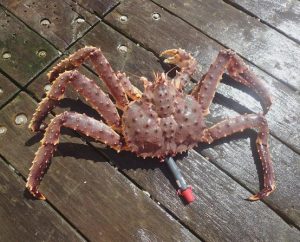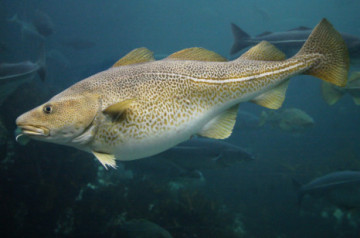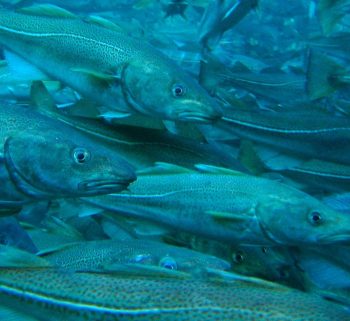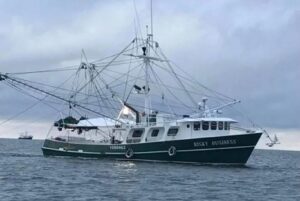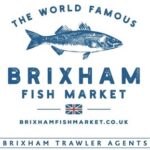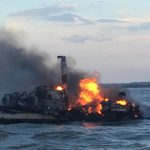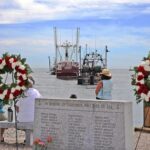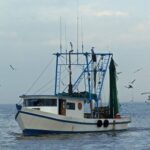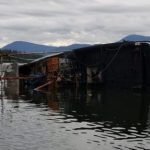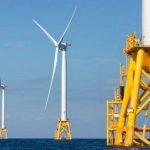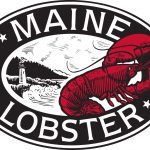Category Archives: Marine Science
Researchers tracking fish to learn more about where they migrate and spawn
Northern cod are about to experience a much higher level of surveillance. The iconic fish — 1,260 of them — are having small transmitters implanted into their bellies. As the cod swim about, their transmitters will send information to 75 acoustic receivers moored to the ocean floor in 13 areas along the eastern continental shelf and in three areas closer to shore in cod fishery area 2J3KL. >click to read< 19:10

Sea Grant awards $2 million to advance understanding of American lobster, support industry
Sea Grant announced new funding today for research aimed at understanding physical and chemical changes affecting American lobster (Homarus americanus) in the Gulf of Maine as well as a regional lobster extension program. Collectively, the research projects and regional extension program comprise the Sea Grant American Lobster Initiative. The seven research projects were chosen through a competitive processes that included review by subject matter experts. The research competition solicited proposals aimed at addressing one or more of the following priorities: >click to read< 10:21

CITES lists Mako shark under Appendix 2 trade restrictions, By Jim Lovgren
Commercial fisherman Jim Lovgren was at the CITES Convention held from the 17th to the 28th of August, 2019 in Geneva, Switzerland. He has written a comprehensive report about it, and he asked us to share it with you. There is a lot to review and is worthy reading,,, From Mako’s to Dogfish, and beyond,,, the influence of green money on the CITES party delegates and what has been happening in U.S. fishery management.,,This is exactly what is happening to U.S. fishermen, as small owner operator vessels are being squeezed out of fishery after fishery by the manipulations of “Greenwashed” corporate sponsored Enviro groups, out to save the planet. The U.S. government offers no help to the fishing industry because they are simple pawns to the energy companies that are running the show. Fishermen are just a nuisance, in the way of their offshore energy development plans. >click to read< 11:52
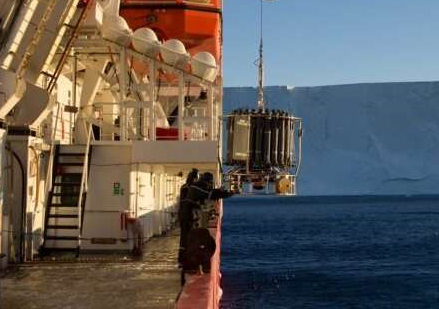
Dense Antarctic water returning to the Atlantic
The supply of dense Antarctic water from the bottom of the ocean to the Atlantic has declined in recent years. However, a new study explains for the first time how since 2014 this has stabilized and slightly recovered due to the variability in upstream dense waters, with implications for the global climate.,,, Lead author Dr. Povl Abrahamsen, oceanographer at British Antarctic Survey, says: “The deep oceans have been warming across much of the world for decades, so we were surprised to suddenly see this trend reversing,,, >click to read< 15:40
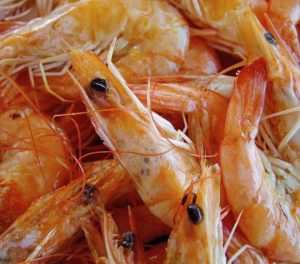
What’s the difference between shrimp and prawn?
Which is which? Shrimp and prawns have a lot in common, but they are, in fact, entirely different animals. Both shrimp and prawns are decapods, meaning that they have 10 legs and a thin external skeleton, but that’s where the similarities end.,,, Another difference between the two is how they reproduce. Shrimp carry their fertilized eggs with them on the underside of their bodies. Prawns release their eggs,,, >click to read< 09:53
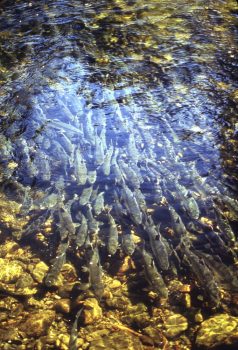
Scientists warn of too many pink salmon in North Pacific
Biological oceanographer Sonia Batten experienced her lightbulb moment on the perils of too many salmon three years ago as she prepared a talk on the most important North Pacific seafood you’ll never see on a plate, zooplankton. Zooplanktons nourish everything from juvenile salmon to seabirds to giant whales. But as Batten examined 15 years of data collected by instruments on container ships near the Aleutian Islands, she noticed a trend: zooplankton was abundant in even-number years and less abundant in odd-number years. Something was stripping a basic building block in the food web every other year. And just one predator fit that profile. >click to read< 15:47

Is seismic testing to blame for disappearing plankton? This scientist says it’s possible
Scientists have noticed a mysterious population crash in some of the Atlantic Ocean’s tiniest and most important species, and a Halifax biologist says oil and gas exploration may be to blame.,,, The tiny organisms are disappearing from Newfoundland and Labrador’s waters, and Lindy Weilgart says blasts from seismic air guns have been shown to wipe them out.,,, On the other side of the world, Australian scientists first found that testing with seismic air guns destroys plankton a few years ago, >click to read< 21:18
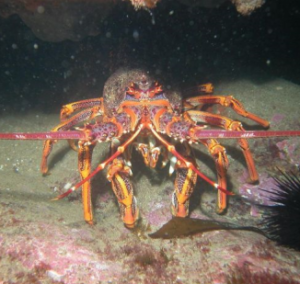
Seismic air guns found to harm balance organ in rock lobsters
A team of researchers with the University of Tasmania and Curtin University has found that seismic air guns used for oil and gas exploration can damage a sensory organ in rock lobsters called the statocyst, which provides balance and orientation. In their paper published in Proceedings of the Royal Society B, the group describes tests they conducted with lobsters in their lab and what they found. >click to read< 11:02
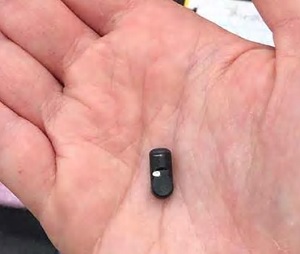
A fish tag that knows it’s been eaten is helping endangered Atlantic salmon
New tracking devices inserted into Atlantic salmon reveal that up to 48 per cent of the critically endangered fish are being eaten while leaving Nova Scotia’s Stewiacke River on their ocean migration. The insight is the result of acoustic tags that can tell when a tagged fish has been eaten.,, Striped bass the main predator,,, One thing has not changed: Atlantic salmon remain in deep trouble in the inner Bay of Fundy rivers where they are wiped out or on the brink of extinction. >click to read< 10:13
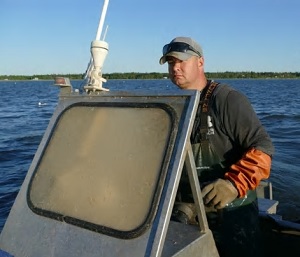
Fewer fish, or fishy science? Commercial fishers, biologists at odds over the state of Lake Winnipeg’s walleye
Minutes before dawn, five boats speed out of Hecla Village Harbour on Lake Winnipeg, home to the second-largest freshwater fishery in North America after the Great Lakes. The seven-metre skiffs are small enough to allow gill nets to be hauled up over their bows and pulled along their gunwales, revealing the catch ensnared below the surface of the shallow but enormous lake during the previous 24 hours.,, Walleye is the lifeblood of their business,,, Walleye deteriorating, province says,,, Few fish, or fishy data? >click to read< 09:14
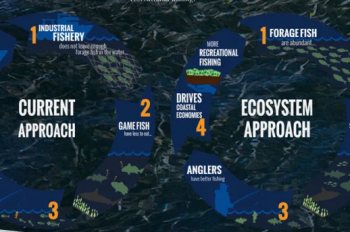
A Forage Fish War – Canadian company targets critical forage fish in Atlantic and Gulf
The two U.S. menhaden fisheries are in the Chesapeake Bay and the Gulf,,, Omega Proteins, headquartered in Canada, has sought certification that the fishery is sustainable.,, Now it has sought the same certification in the Gulf of Mexico, according to a joint statement from the American Sportfishing Association, the Coastal Conservation Association, and the Theodore Roosevelt Conservation Partnership.,, “The ASA, Theodore Roosevelt , and CCA, have formally objected, That steep price (of MSC certification) caused Sport Fish Magazine writer Doug Olander to pen a satirical op-ed,,,That prompted a swift backlash by Omega Proteins, “According to the ASMFC [Atlantic States Marine Fisheries Commission], Striped Bass are overfi…>click to read<17:23

MacArtney Lobster Monitoring Tech for SLU
In 2009, MacArtney supplied SLU with a camera and light system that utilised direct telemetry and standard cabling for the original Lobster Sledge. A decade later MacArtney is still collaborating with SLU and has completed the co-design of the Lobster Sledge upgrade that incorporates an HD camera, LED lights, fibre optic multiplexer and interfaces. The system, designed to be towed along the seabed, collects data on the current lobster population. The data collected monitors the lobster population and informs fishing quotas for the southern coast of Norway and the Swedish coast. >click to read<08:44
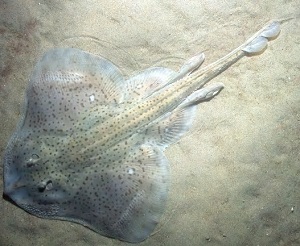
Winter skate are dying in huge numbers, a new scientific paper points the finger at a big herd of seals
A “striking conservation success” in Atlantic Canada has turned into a “serious conservation problem” as rebounding grey seal herds threaten depleted bottom-feeding fish in the southern Gulf of St. Lawrence, according to a new research paper from Canadian and U.S. scientists. The focus is on the winter skate, a little-known shark relative with a flat body and a long tail. “It’s quite dire. The skate have declined by 98 per cent since the mid-80s,” said Doug Swain, a federal fisheries scientist based in Moncton, N.B. The paper concludes grey seals are the likely cause of an “unprecedented” winter skate annual adult mortality rate of between 65 and 70 per cent. >click to read<09:20
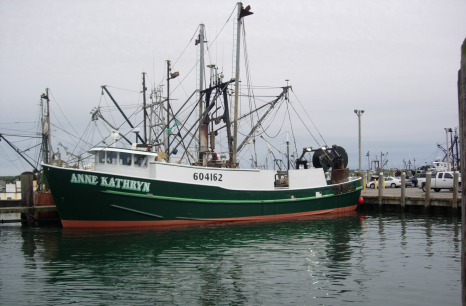
OUT TO CATCH THE LAST FISH? Fisheries “expert’s” anti-fisherman rhetoric gets taken to task!
“…most fishermen always want to catch more fish, regardless of how many there are.” This quote from the fisheries “expert” in the article, Warming waters spark marine migration, fish wars >click to read<on the warming ocean, and Joel’s subsequent comment, “And here in lies the problem. Look at what this cubical entrenched pencil pushing empty suit thinks of fishermen. Folks like this need to be taken to task”, inspired a re-post of this anti-fishing propaganda article, OUT TO CATCH THE LAST FISH? It’s a few years old, but sadly, as current as ever! To be a fisherman, these days, is to have first-hand knowledge of bias and mindless prejudice. Manipulating commercial fishing to save the stocks from “endangerment” and worse, has often been job justification for the political and personal agenda-driven, obsequious, career-climbing government fisheries “scientists” and managers. “Destructive” commercial fishing is also a handy foil for corporate style environmental groups’ fund raising efforts; and diminishing the importance of domestic commercial fishing is also a necessary step in the energy industry’s march into the sea. >click to read< Thank you, Dick.17:02
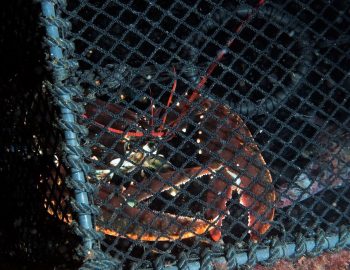
Big claws: Good for lobster sex life, potentially fatal in the fishing season
Between Arendal and Grimstad, researchers tagged 100 lobsters with acoustic transmitters. With the help of numerous stationary receivers, they were able to track the lobsters’ movements during the fishing season. “How lobsters move around indicates something about their personality. Are they cautious or are they risk-takers? There are advantages and disadvantages to both of those traits”, says marine scientist Even Moland. It turned out that lobsters with a big crusher claw were more likely to end up in a crab pot. >Video, click to read<17:42
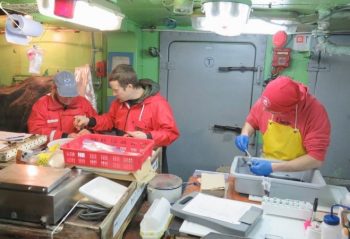
Salmon researchers seek funds for expanded expedition in 2020
Organizer Richard Beamish, emeritus scientist at Fisheries and Oceans Canada’s Pacific Biological Station in Nanaimo, is seeking $1.5 million from governments, the private sector and non-profit organizations — the same groups that funded his 2019 expedition. Next year’s survey would again be supported by the North Pacific Anadromous Fish Commission, an international organization based in Vancouver. The 2019 expedition was a signature project of the International Year of the Salmon program, which is backed by the Anadromous Fish Commission, as well as the North Atlantic Salmon Conservation Organization and other partners. >click to read<20:27
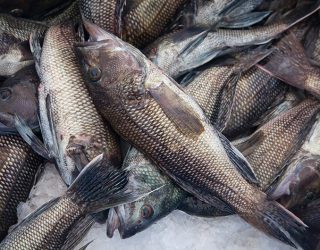
Scup, Bluefish, Black Sea Bass, and Monkfish – 2019 Fisheries Stock Assessments
The Northeast Fisheries Science Center would like to inform you of the 2019 stock assessments. During these assessments we will use existing models and data sources to evaluate stock health. Our data come from a variety of sources, including recreational and commercial fishermen, fish dealers, fishery observers, and research surveys. There will be several sets of assessments conducted this year, and the assessment process begins for Scup, Bluefish, Black Sea Bass, and Monkfish on Monday May 20, 2019 with a panel review of scientific information and assessment plans (details below). After this plan review, the assessments will be conducted and later peer reviewed in 2019. >click to read<09:49
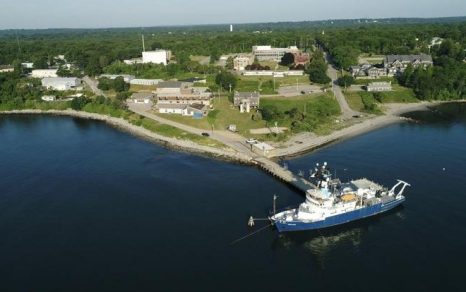
NOAA picks URI to lead new ocean exploration consortium
The University of Rhode Island will lead a new $94 million consortium to support ocean exploration, responsible resource management, improved scientific understanding of the deep sea and strengthen the nation’s Blue Economy, the National Oceanic and Atmospheric Administration (NOAA) announced today. The Ocean Exploration Cooperative Institute, comprised of five internationally renowned ocean science institutions and led by the University of Rhode Island Graduate School of Oceanography, will spend the next five years working closely with NOAA’s Office of Ocean Exploration and Research (OER) to survey an estimated 3 billion acres of U.S. ocean territory. >click to read<
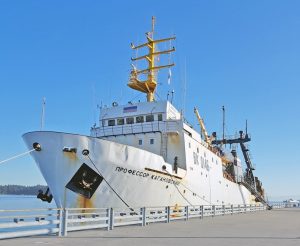
International team of salmon scientists back in port, raring for another mission
The organizer of a month-long Gulf of Alaska salmon survey is already thinking about how to raise money for another trip in the winter of 2020, now that the Russian trawler used in the expedition has finished its job and tied up in Nanaimo. “From what I’ve seen, this needs to be done again,” said Richard Beamish, who came up with the idea of the expedition to mark the International Year of the Salmon with the North Pacific Anadromous Fish Commission. Future surveys would build on data collected by the 21-member volunteer team of international scientists from the five salmon-producing Pacific Rim countries: Canada, Russia, the U.S., Korea and Japan. >click to read<11:52
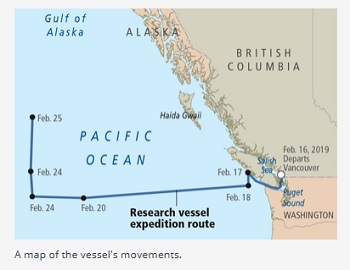
From their work at sea and in Nanaimo lab, researchers discover that B.C. coho are wintering in Gulf of Alaska
Onboard DNA analysis of salmon — the first time such complex molecular research has been performed at sea — has discovered that B.C. and Puget Sound coho are wintering in the Gulf of Alaska. The proof that it is possible to perform such analysis shipboard, and with only about $10,000 worth of compact equipment, is considered game-changing by international scientists halfway through a winter research cruise using the chartered Russian trawler Professor Kaganovsky and its crew in the Gulf. >click to read<19:39
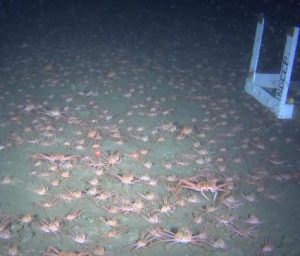
How a flipping crab led researchers to discover that a commercially harvested species feeds at methane seeps
Researchers have documented a group of tanner crabs vigorously feeding at a methane seep on the seafloor off British Columbia – one of the first times a commercially harvested species has been seen using this energy source. There are many implications, researchers say, and surprisingly most of them are good. Human consumption of tanner crabs – one of three species sold as snow crabs – that feed on methane-eating bacteria and archaea should not pose a health concern because methane seeps are not toxic environments. The discovery actually may mean that methane seeps could provide some seafloor-dwelling species an important hedge against climate change – because nearly all models predict less food will be falling into the deep sea in coming years >click to read<17:30

Lobster’s underbelly is as tough as industrial rubber
Flip a lobster on its back, and you’ll see that the underside of its tail is split in segments connected by a translucent membrane that appears rather vulnerable when compared with the armor-like carapace that shields the rest of the crustacean. But engineers at MIT and elsewhere have found that this soft membrane is surprisingly tough, with a microscopic, layered, plywood-like structure that makes it remarkably tolerant to scrapes and cuts. This deceptively tough film protects the lobster’s belly as the animal scuttles across the rocky seafloor. >click to read<11:10
B.C.-led international expedition to probe ailing Pacific salmon stocks
An unprecedented international collaboration could revolutionize salmon science and fisheries management, return forecasting and even hatchery output. Nineteen scientists from Russia, Canada, the United States, Japan and South Korea are set to probe the secret lives of five Pacific salmon species with a four-week grid search and test fishery across the Gulf of Alaska. The expedition begins next week aboard the Russian research ship MV Professor Kaganovsky. “We know virtually nothing about what happens to salmon once they leave near-shore waters in the Salish Sea,” said expedition organizer Dick Beamish. >click to read<13:56
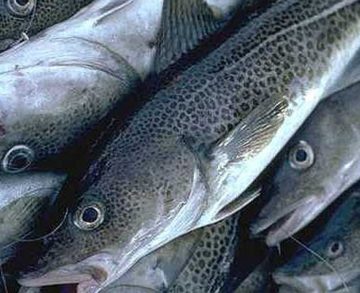
Sustainability: a flawed concept for fisheries management?
The concept of sustainable fishing is well ingrained in marine conservation and marine governance. However, I argue that the concept is deeply flawed; ecologically, socially and economically. Sustainability is strongly related, both historically and currently, to maximum long-term economic exploitation of a system. Counter-intuitively, in fisheries, achieving this economic exploitation often relies on government subsidies. While many fish populations are not sustainably fished biologically, even ‘sustainably harvesting’ fish results in major ecological changes to marine systems. These changes create unknown damage to ecosystem processes, including carbon capture potential of the ocean. The spatial scale of commercial fishing processes can also lead to social and food security issues in local, coastal communities that rely on fish for dietary needs. A radical alternative proposal is provided to the current situation.,,, MSY, however, has been a mainstay of fisheries policy since the term was introduced in 1954 (Schaefer, 1954), and is covered in many basic ecological textbooks (e.g., Begon et al., 2006). The concept is simple: By Richard Stafford>click to read<21:13
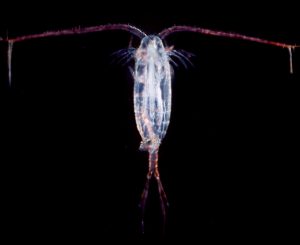
Building blocks of ocean food web in rapid decline as plankton productivity plunges
They’re teeny, tiny plants and organisms but their impact on ocean life is huge. Phytoplankton and zooplankton that live near the surface are the base of the ocean’s food system. Everything from small fish, big fish, whales and seabirds depend on their productivity. “They actually determine what’s going to happen, how much energy is going to be available for the rest of the food chain,” explained Pierre Pepin, a senior researcher with the Department of Fisheries and Oceans in St. John’s. Pepin says over the past 3-4 years, scientists have seen a persistent drop in phytoplankton and zooplankton in waters off Newfoundland and Labrador. >click to read<10:16







